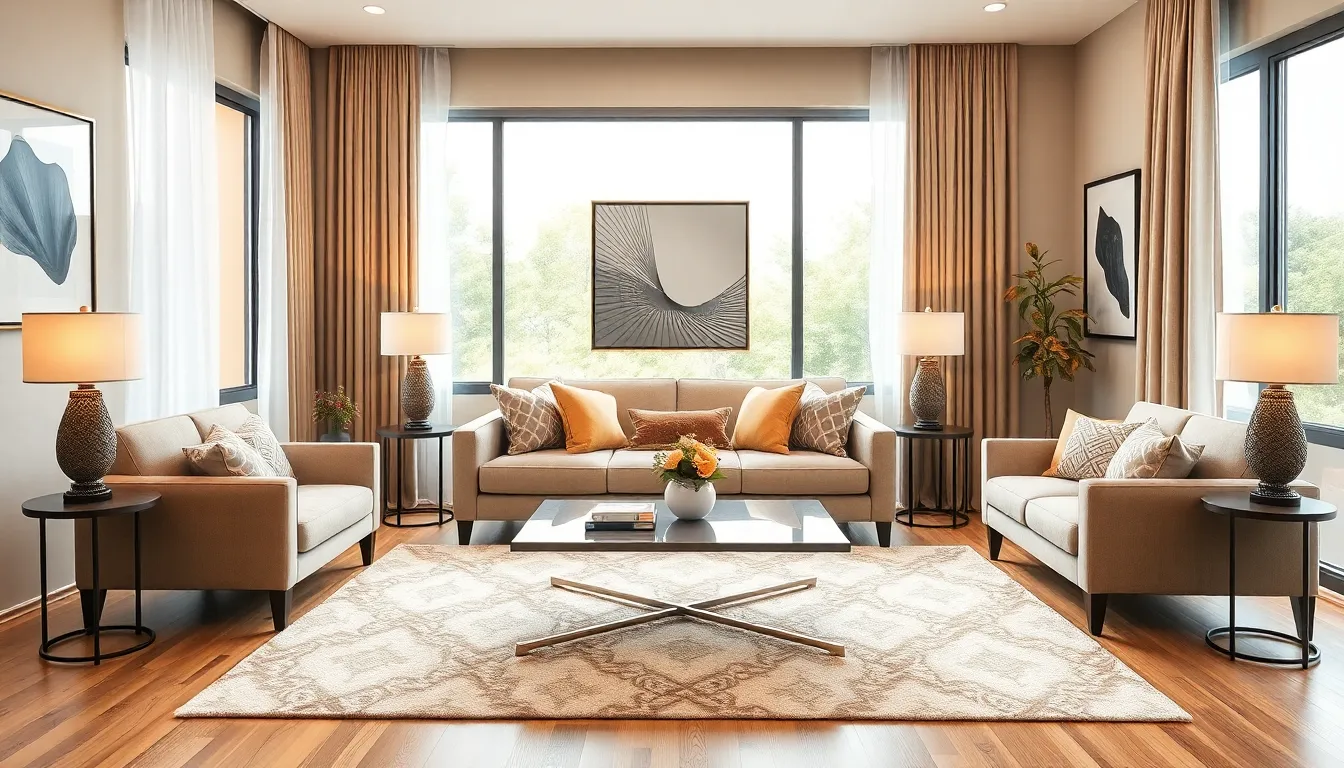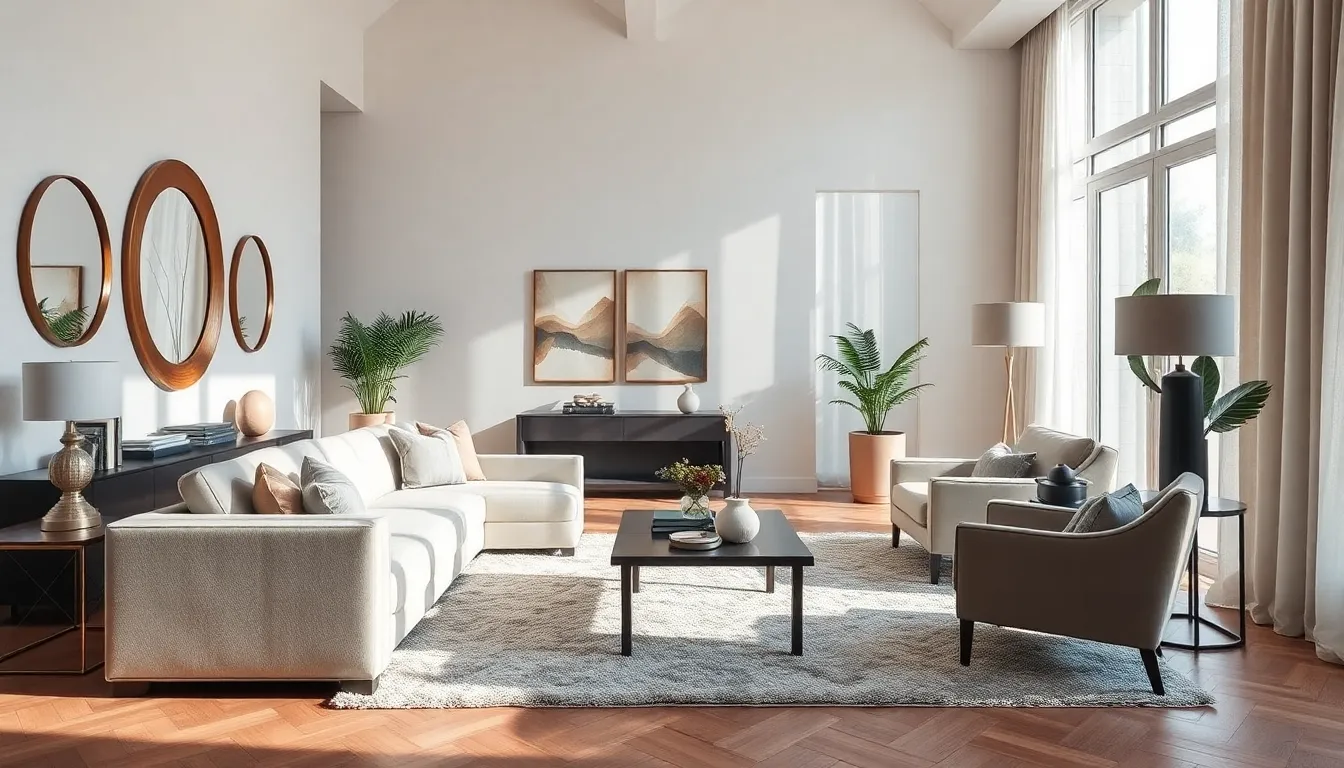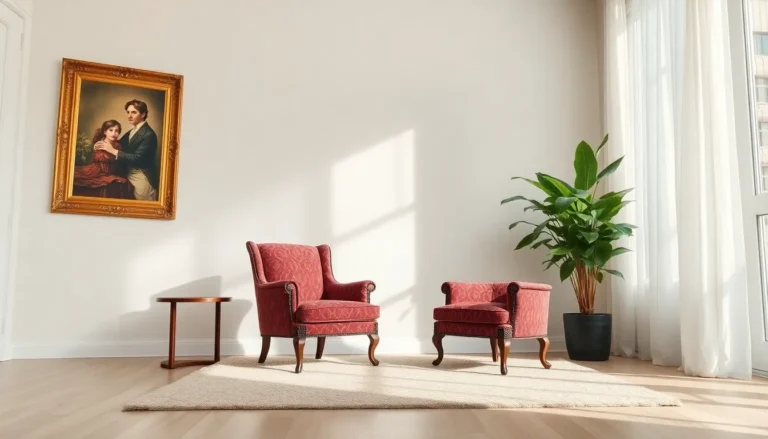When it comes to transforming a space into something truly magnificent, interior design concepts play a pivotal role. Not only do these ideas breathe life into walls, but they also create atmospheres that reflect personality and style. Imagine your living room as the backdrop for your next family gathering, or your bedroom as a serene sanctuary. Now, that’s a vision. In this journey through the world of interior design, we’ll explore essential principles, styles, and tips that could make anyone feel like an interior design wizard. Buckle up, because the next levels of aesthetic wonder are just a scroll away.
Table of Contents
ToggleUnderstanding Basic Interior Design Principles

To start, it’s essential to grasp the foundational principles of interior design. These principles include balance, harmony, proportion, scale, and rhythm.
Balance is about creating a visual equilibrium in the space. It can be symmetrical (think of a perfectly centered sofa flanked by two identical lamps) or asymmetrical (maybe a large art piece on one side with a slender vase on the other). Either way, balance prevents the eye from feeling overwhelmed by chaotic arrangements.
Next up is harmony. This principle ensures that all elements within a space work together cohesively. A harmonious room often combines colors, patterns, and textures that complement one another beautifully. Imagine walking into a room where every detail, from the curtains to the cushions, whispers the same design language – delightful, isn’t it?
Proportion and scale go hand in hand in ensuring that the furniture fits well within the room. Oversized furniture can crowd a small space, while tiny pieces may feel dwarfed in a larger room. For instance, a massive sectional sofa might be stunning in an expansive living room but a cluttered disaster in a cozy studio apartment.
Finally, we have rhythm, which involves creating a flow within the space. This could be achieved through a repetitive use of colors or shapes that guide the eye seamlessly from one area to another. Think of it as a dance – each element leads gracefully into the next, creating an inviting experience.
Key Elements of Interior Design
Diving deeper into the realm of interior design reveals several essential elements that serve as the building blocks of any interior space.
Color: This is perhaps one of the most powerful tools in a designer’s arsenal. From soft pastels to bold, vibrant hues, color sets the mood and character of a space. Each shade communicates something unique: for instance, blue can evoke tranquility, while red can ignite energy.
Space: The amount of space, both negative and positive, plays a crucial role. Neglecting this aspect can often lead to cluttered or cramped designs. An effective design utilizes the available space intelligently, allowing for smooth movement and functionality.
Textures: Introducing different textures like soft fabrics, rough stones, or glossy finishes can add depth and intrigue to a space. Combining various textures creates an engaging visual experience that feels inviting and layered.
Furniture: It’s not just about filling a space but about choosing the right pieces that speak to the design’s intent. Whether it’s a sleek modern chair or an antique coffee table, furniture should support the overall look and feel while providing comfort and usability.
Accessories: Things like artwork, plants, and decorative objects serve as the finishing touches that can truly personalize a space. They add character and can reflect the owner’s tastes and interests, transforming a standard room into a unique sanctuary.
Popular Interior Design Styles
The world of interior design is rich with an array of styles that cater to diverse tastes. Each style not only stands out aesthetically but also comes with its own philosophy and vibe. Here are a few popular ones:
Modern: Clean lines, minimalistic approach, and functional furniture define modern style. Think open layouts and a color palette consisting of neutral tones, often accented with bold artwork.
Traditional: This timeless style incorporates classic details, rich colors, and elegant furnishings. Antique furniture, ornate moldings, and patterned fabrics create a sophisticated atmosphere.
Scandinavian: Rooted in simplicity and functionality, this style embraces natural elements and light colors. Big windows, wooden accents, and cozy textiles give homes a warm yet airy feeling.
Industrial: With its gritty urban edge, industrial design features raw materials, exposed beams, and metallic finishes. It’s all about showcasing the beauty of imperfection, giving spaces a unique, edgy look.
Bohemian: For those who revel in an eclectic mix, bohemian style embraces a colorful, layered aesthetic. It’s characterized by vibrant colors, various patterns, and an abundance of plants, creating an inviting and carefree atmosphere.
Color Theory in Interior Design
Color theory is fundamental for anyone looking to create a visually pleasing environment. Not only does color influence how a room feels, but it can also affect mood and perception.
Primary Colors: The foundation of color theory, these include red, blue, and yellow. When used thoughtfully, they can form stunning palettes. For instance, pairing a rich blue with warm wood tones can bring an elegant, calming vibe.
Complementary Colors: These are colors opposite each other on the color wheel, creating contrast that’s visually striking. For example, incorporating orange accents into a blue-themed room can add a pop of excitement without overwhelming the space.
Analogous Colors: Found next to each other on the color wheel, these colors create a harmonious look. They can add dimension while ensuring the overall aesthetic remains unified. Think soft greens, yellows, and blues for a refreshing indoor garden feel.
Monochromatic Schemes: Utilizing varying shades of a single color can lend a sophisticated touch to a room. This approach emphasizes texture and form, showcasing the beauty of subtlety.
Overall, understanding color theory equips any interior designer with the ability to evoke emotions, enhance functionality, and create stunning aesthetics.
The Role of Lighting in Interior Spaces
Lighting serves as the unsung hero in interior design, often elevating a mediocre room into a breathtaking space.
There are three main types of lighting:
- Ambient Lighting: This is the main source of light in a room, typically provided by ceiling fixtures or lamps. It establishes the room’s overall brightness and can influence the ambiance dramatically.
- Task Lighting: Used primarily for specific activities – think reading lamps or kitchen under-cabinet lights. This form of lighting is crucial for functionality.
- Accent Lighting: Highlighting artwork or architectural features, accent lighting creates dramatic effects and adds interest to space.
Layering these three forms of lighting allows for flexibility in a room’s atmosphere. Want to create a cozy environment for a movie night? Dim the ambient lights and turn up the accent lighting on a favorite piece of art. Designing for a home office? Bright task lighting is critical for staying focused and productive.
Integrating Functionality and Aesthetics
Integrating aesthetics with functionality is vital in effective interior design. A beautiful space shouldn’t just look good: it should also serve its purpose effectively.
When designing a living room, choosing furniture that offers comfort while maintaining style can be a challenge. Opting for chic sofas with built-in storage can resolve both issues, ensuring the space remains tidy and stylish.
In the kitchen, functionality reigns supreme. Incorporating easy-to-reach cabinets and thoughtful layouts enhance usability without sacrificing design. Choosing appliances that blend in silently with surroundings elevates aesthetic without compromising on practicality.
Finally, bathrooms can easily fall into the trap of focusing solely on looks. Smart designs that prioritize organization, like installing shelves or hidden cabinets, can turn an ordinary bathroom into an efficient retreat. This perfect blend guarantees that aesthetics do not overshadow usability.








